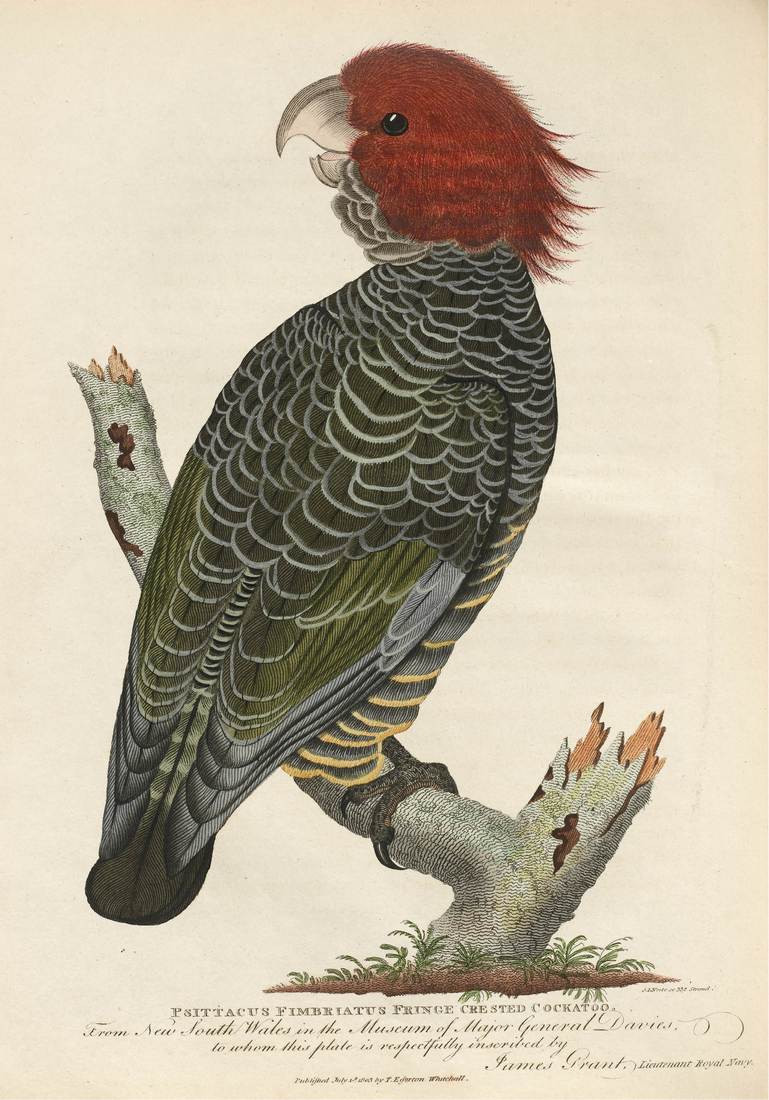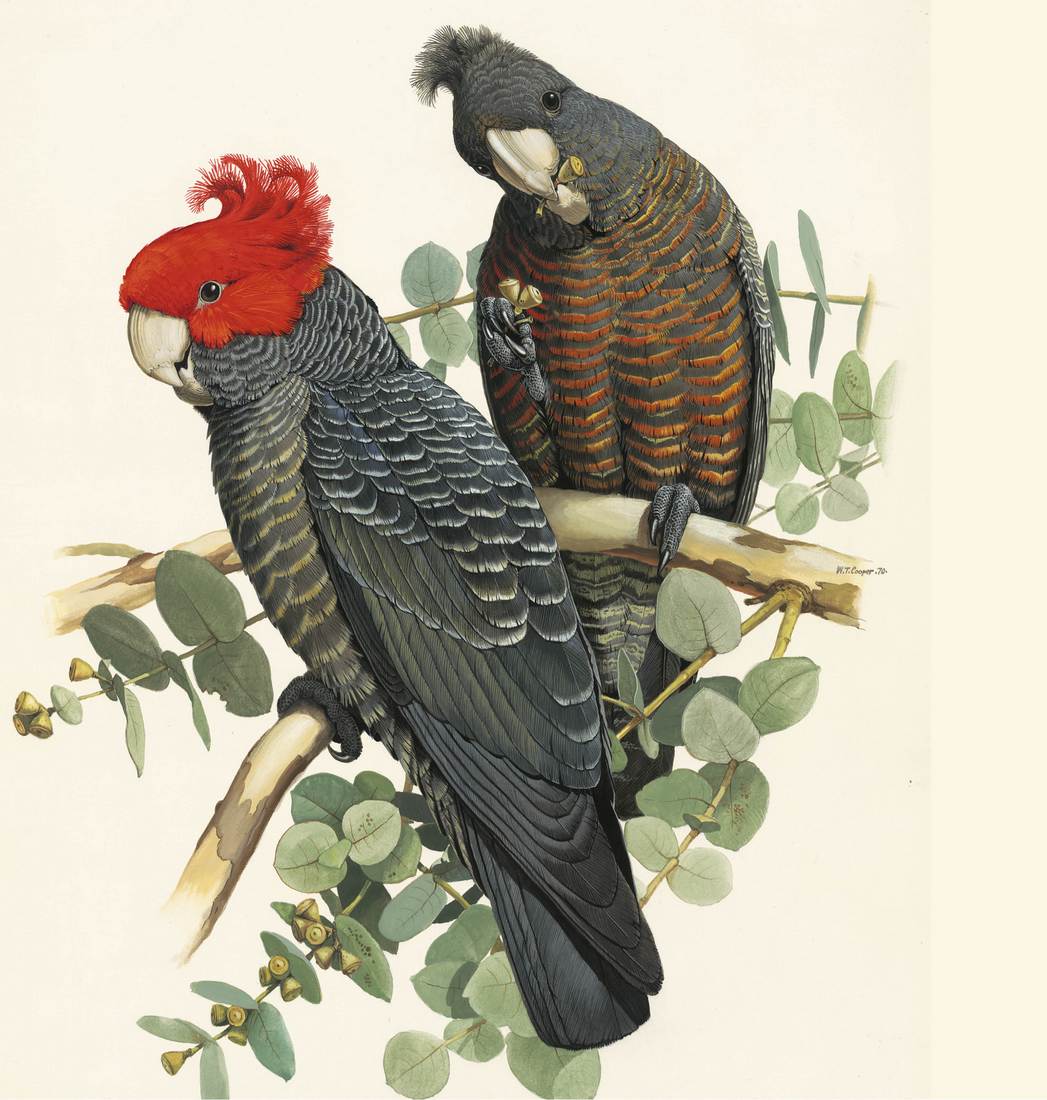Gang-Gang Cockatoo
Callocephalon fimbriatum
James Grant was the first to describe the species, in 1803.
Callocephalon is derived from the Greek kallus (beautiful) and kephale (head); fimbriatum is from the Latin frimbriatus (fringe), which refers to the decorative forward-sweeping crest.

Major-General Thomas Davies (artist), Samuel John Neele (engraver), Psittacus fimbriatus: Fringe Crested Cockatoo 1803 (adult male)
Author’s note: This illustration is the first published of the species and accompanied James Grant’s description. The Gang-gang Cockatoo is one of six parrots for which an Aboriginal name has been adopted into common use, initially by the colonists of New South Wales (the others are the Galah, the corellas and the Budgerigar). The name gang gang might have been used by the Ngunnawal people of the Canberra region, supposedly for ‘a small black cockatoo’, or by the Wiradjuri people of south-western New South Wales and north-western Victoria to refer to ‘a grey parrot’. If the latter, it is misapplied to the species we call a Gang-gang today, as it does not occur in that area.

William Cooper, Gang-gang Cockatoo (Callocephalon fimbriatum) 1970 (adult male, left; adult female, right)
Author’s note: The Gang-gang Cockatoo has a distinctive call, resembling the creaking of a gate with a rusty hinge. All other cockatoos nest in the hollow limbs and trunks of large trees, mainly eucalypts, whether living or dead. Only the Gang-gang Cockatoo appears to have a preference for holes in large, living trees.



